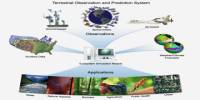Whole-genome sequencing (WGS) is an in-depth method for studying entire genomes. Identifying inherited illnesses, defining the mutations that cause cancer progression, and tracking disease outbreaks have all benefited from genomic information. Whole-genome sequencing is a valuable tool for genomics research due to rapidly declining sequencing prices and the capacity to generate massive volumes of data using today’s sequencers.
The University of Exeter has published the results of the largest ever whole-genome sequencing investigation for the potentially lethal yeast illness Candida glabrata from hospitals across Scotland.
Candida glabrata is a yeast that can infect humans. It is most usually seen in the urinary tract, genitals, mouth, and bloodstream. These infections can be fatal if not treated in time. It is also extremely resistant to certain antifungal medicines, so understanding why resistance emerges is critical to knowing how to treat it successfully.
The current study, published in Genetics, sequenced the genome of Candida glabrata using samples from eight hospitals in Scotland. This resulted in the finding of a wealth of fresh knowledge on the species. This includes details on how they reproduce as well as genetic diversity. It was also shown that genes that make it more likely to be infectious have a survival advantage, and drug-resistance genes frequently evolve within patients.
Our findings shed new light on Candida glabrata’s genetic diversity. We have shown that this lethal human fungal infection is spreading across continents, most likely by humans, and recombining to generate new populations, which is likely contributing to its high virulence and increasing medication resistance.
Dr. Rhys Farrer
It can be challenging for scientists who use DNA sequencing in their study but are not specialists in the underlying technology to establish the accuracy of sequencing results — and even more difficult to compare accuracy across sequencing platforms. Furthermore, accuracy varies not only across technologies, but also across genomic areas, as some portions of the genome are fundamentally more difficult to read than others. It is crucial to understand DNA sequencing accuracy in order to identify important biological information from sequencing errors.
The finding of this knowledge provides scientists with an advantage in the treatment of Candida glabrata. Researchers can now focus their study in ways that were previously impossible due to a greater understanding of the genes involved. It also contributes to a better knowledge of how the disease spreads, which is critical for diagnosing infections.

Dr. Rhys Farrer, one of the Principal Investigators at the University of Exeter’s MRC Centre for Medical Mycology, stated: “Our findings shed new light on Candida glabrata’s genetic diversity. We have shown that this lethal human fungal infection is spreading across continents, most likely by humans, and recombining to generate new populations, which is likely contributing to its high virulence and increasing medication resistance.”
Whole genome sequencing gives more extensive and precise data for spotting epidemics than PulseNet’s current standard technique, pulsed-field gel electrophoresis (PFGE). Instead of comparing bacterial genomes using only 15-30 bands from a PFGE pattern, we now have millions of bases to compare. That is equivalent to comparing all of the words in a book (WGS) rather than simply the number of chapters (PFGE) to determine if the books are the same or different.
Whole-genome sequencing, as opposed to focused techniques such as exome sequencing or targeted resequencing, which investigate a small region of the genome, provides a comprehensive perspective of the entire genome. It is useful for discovery applications such as detecting causal variations and assembling novel genomes.
Whole-genome sequencing is capable of detecting single nucleotide variants, insertions/deletions, copy number alterations, and major structural variants. Because of recent technological advancements, the most recent genome sequencers can execute whole-genome sequencing more effectively than ever before.
A genome assembly’s precision extends beyond the correctness of each individual base. Even flawless reads can contribute to low accuracy if the assembly is not properly arranged and aligned. Mappability refers to the question of where to position the read.
















